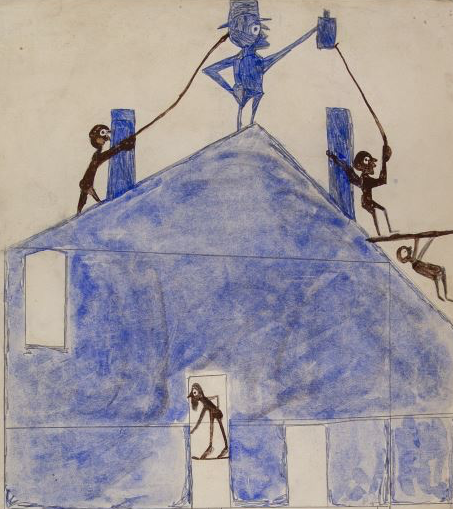
NEW YORK — Bill Traylor (circa 1853-1949) is the quintessential self-taught artist. Born a slave in rural Alabama, he lived through extreme hardships during the Jim Crow segregation period, as well as homelessness and poverty in his later years, before taking up drawing. He was not a trained artist and therefore not influenced by other artists, so his artistic style was all of his own making.
“In the whole genre of self-taught and outsider art, Bill Traylor really exemplifies exactly what we are doing…and what this field is about,” said Steve Slotin, co-owner of specialty auction house Slotin Folk Art in Buford, Geordia. “He grew up with very little formal education and no art education.”
In his 70s, Traylor was basically homeless and living on the streets in Montgomery, Alabama, where he had lived since trading plantation life for the city in the late 1920s. “He had a desire to create art. It was very simple figures and animals and people, and some abstract geometric patterns,” Slotin said. “For the most part, he was sitting in a back alley drawing these pictures.”
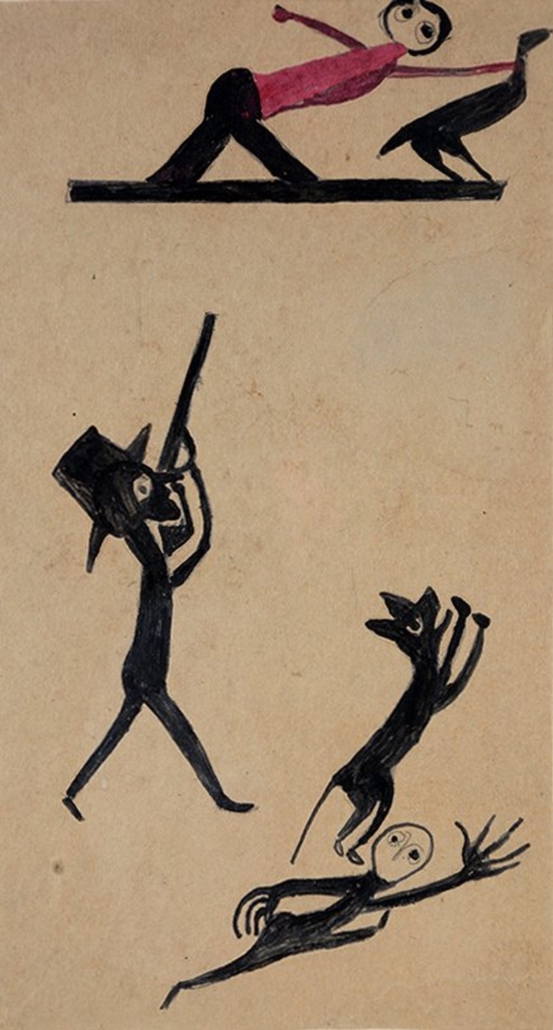
Traylor sold his work very cheaply, for whatever people were willing to pay. Sometime in the 1940s, a fellow artist named Charles Shannon discovered Traylor and was quite taken with his work. He befriended Traylor and became his patron, trying unsuccessfully to interest galleries and collectors in New York City in his work. It would be decades before the art world became interested, but not during Traylor’s lifetime. “Bill recognized this as being a pure form of art with no outside influences, neither European nor academia,” Slotin said. “This is art for the sake of creating.” Although he failed to gain much of an audience for Trayor’s work, Shannon kept buying his works and supplying him with art materials and good paper. “Had he not kept buying, I’m sure it would have all been thrown away,” Slotin said.
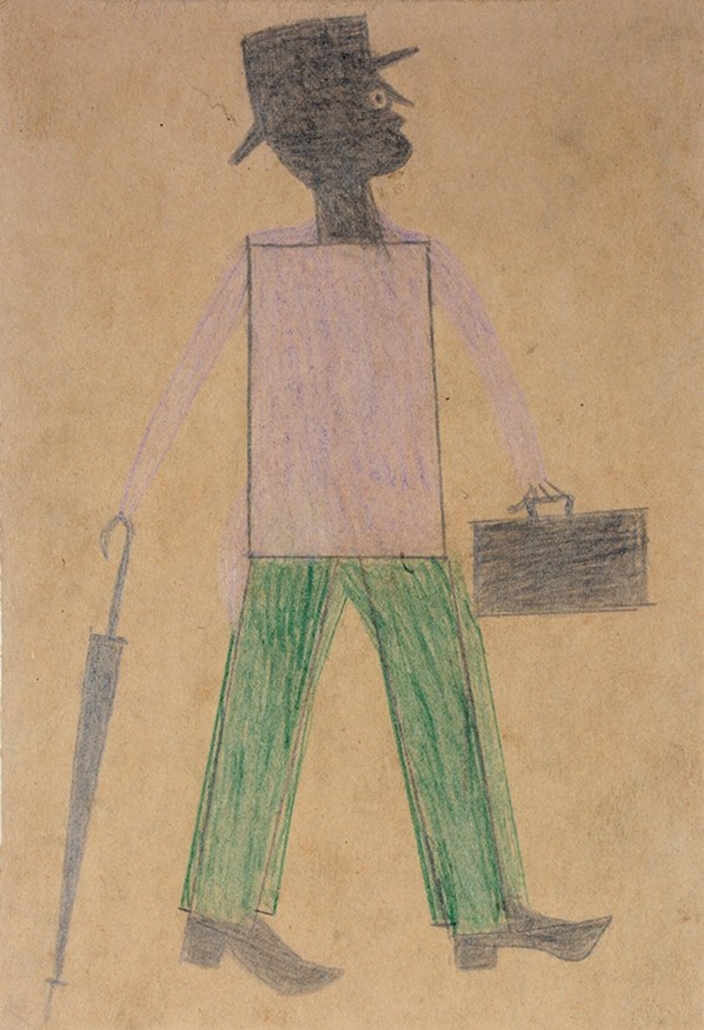
From around 1939 to 1942, Traylor created more than 1,200 drawings, ultimately leaving behind a huge and important legacy to the history of American art. The art petered out after 1942. Traylor moved around a lot, staying with several of his children. Even after he returned to Montgomery, he didn’t really resume his artistic pursuits.
In 1970, the Smithsonian American Art Museum began collecting self-taught art and folk art. Collectors and galleries were also now paying attention to this field and giving Traylor long-deserved recognition. The value of his artworks began to rise exponentially. In 1982, the High Museum of Art in Atlanta acquired 30 of Traylor’s drawings, a breakthrough moment for the late artist.
Today, Bill Traylor is at the high end of self-taught artists coveted by collectors and museums. “Traylor’s drawings and paintings look back at a hard rural past and forward at a rising African American culture. Traylor’s visual depictions are unique, yet they echo the beliefs and stories that had been part of African American history from slavery through many subsequent decades,” says a press release that was issued by the Smithsonian American Art Museum prior to its 2018-19 retrospective of the artist’s work.
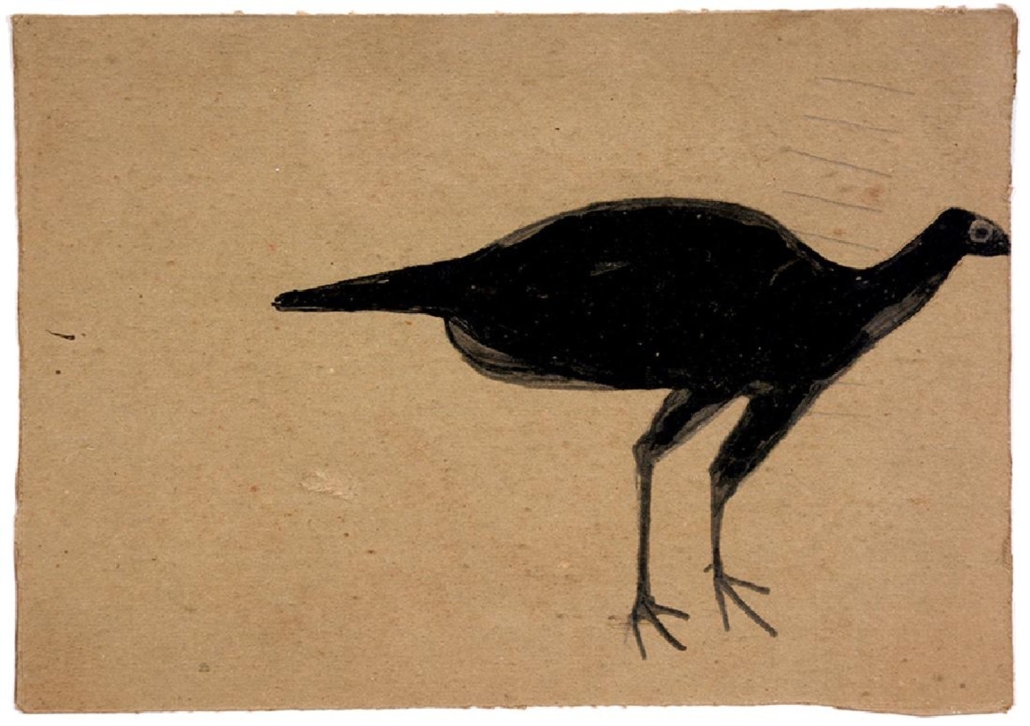
Sometimes Traylor received good-quality paper from his patron, but he is best known for working on discarded cardboard with pencils, charcoal or whatever else he could get his hands on. “The subject matter depicts Southern culture with some of the preachers, some of the drinking and fighting, stealing chickens …” Slotin said. “He was basically just drawing what he could see on the streets. Also, being from a rural area, he knew a lot about animals.” Traylor’s work appears deceptively simple, figures begin with simple geometric shapes that are filled in with graphite or paint.
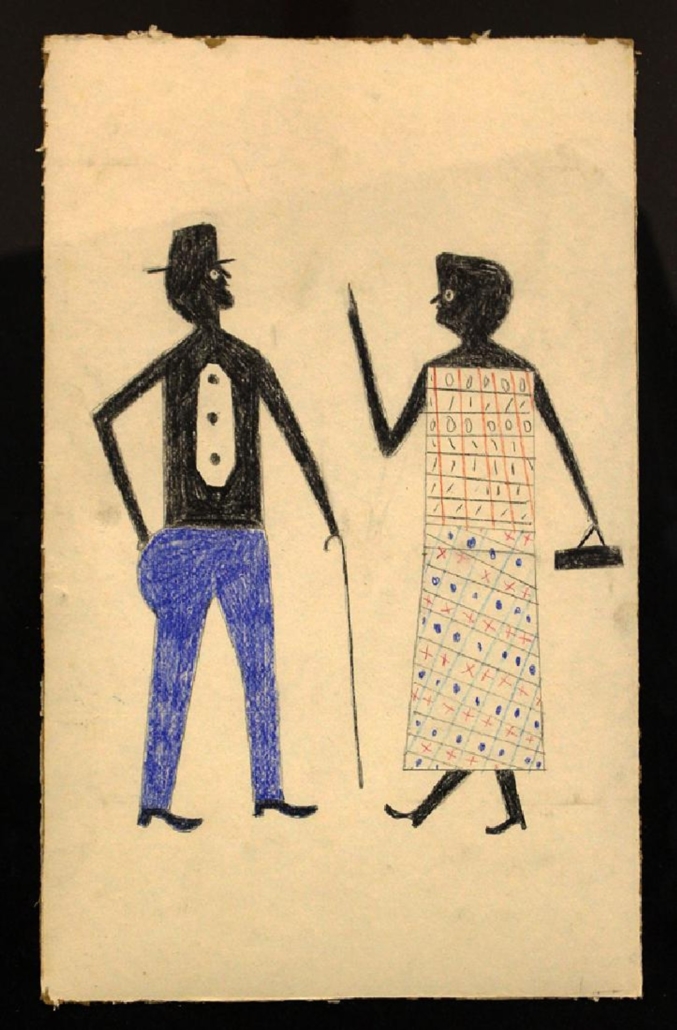

Many of his works feature a single image, usually an animal or a person — a turkey, a black dog, a preacher or a hat-wearing man for example — and these works can see their values increase if color is involved or depending on how detailed the drawing is. “When you get into multiple figures, then the prices jump really fast,” Slotin said. Larger works, say, a piece measuring 20 inches, instead of 10 by 12 inches, can bring six-figure prices. According to Shannon’s writings, Traylor often drew people that passed by as he was sitting on a sidewalk in the Morris Avenue neighborhood in Montgomery. The area was a busting neighborhood then; drinking was a common subject reflected in his artworks.
Bill Traylor’s pencil, tempera and Conte crayon on cardboard work, Four Figures and Basket in Blue, went out at $50,000 in April 2018 at New Orleans Auction Galleries. Photo courtesy of New Orleans Auction Galleries and LiveAuctioneers“[The art of] Bill Traylor is a great place for people to start looking and learning about self-taught art,” Slotin said. “This is the only art form you can point to in all of American history, except Native American art, that is truly an American art form.”
Click to visit Slotin Folk Art online.


